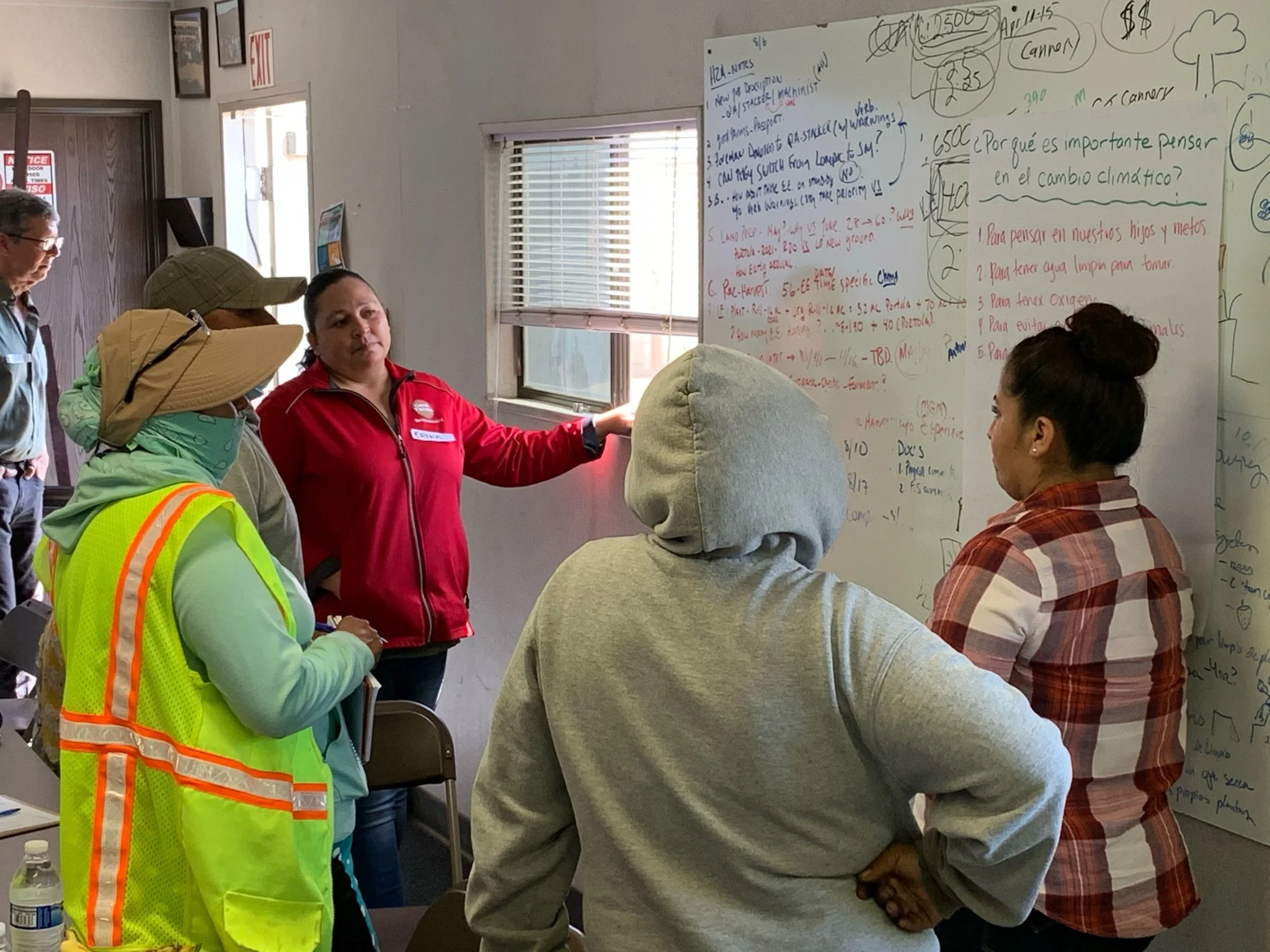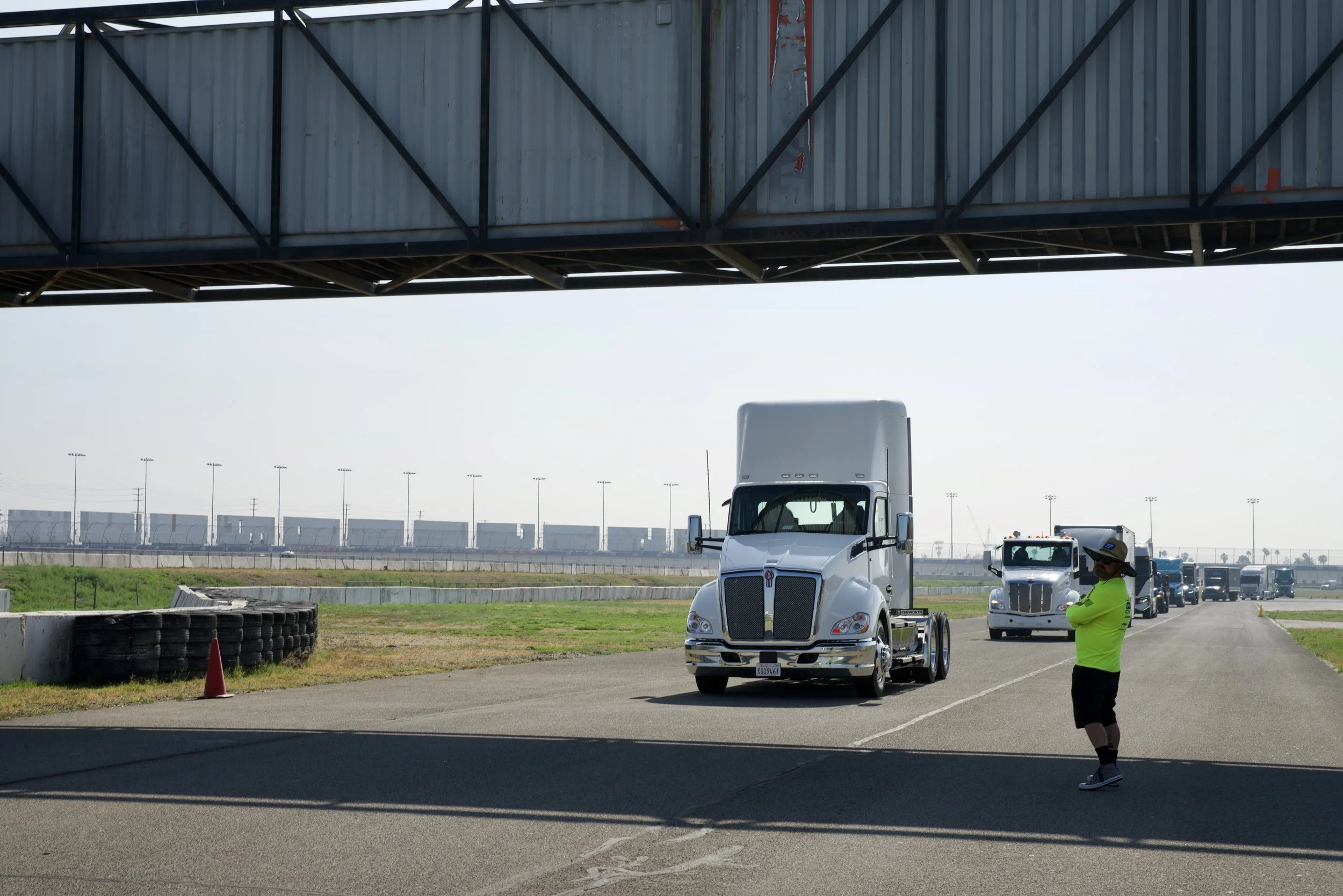Shoreline Restoration in Bayview Hunters Point
Delivering Automotive Pre-Apprenticeship Training Programs in the Bay Area
CARB Supports a Multi-Generational Campaign to Advance Transportation Justice in City Heights
Community Efforts Lead the Way in Sacramento’s River District Transit Plans
Strategic Growth Council
The Sacramento Integrated Multimodal Place-Based Living Project is a Transformative Climate Communities initiative aimed at strengthening community engagement, increasing affordable housing, and expanding public transit in the River District neighborhood of Sacramento. One of the key features of the project, the Dos Rios Light Rail Station, will significantly increase residents’ accessibility to Downtown Sacramento and the greater Sacramento Area. The Mirasol Village Community Garden represents another success of the initiative, giving residents the opportunity to cultivate fresh produce and forge community bonds.
High Road to Better Agricultural Jobs
California Workforce Development Board
The High Road Training Partnerships Program granted nearly half a million dollars through the Equitable Food Initiative (EFI) to engage farmworkers and produce industry employers in the documentation and categorization of foundational, crop-specific, and technical skills. This work will support improved job quality for workers, a more professionalized workforce for employers, and the recognition of skills needed in environmentally sound agricultural production.
Ensuring Climate Resilience and Reducing Energy Costs in Multifamily Housing
California Department of Community Services and Development
The Low-Income Weatherization Program’s Multifamily Energy Efficiency and Renewables Program has been instrumental in increasing climate resilience and renewable energy use in low-income communities across California and incentivizes owners of low-income multifamily housing to retrofit their properties with energy efficiency technologies and solar panels. These upgrades reduce GHG emissions while lowering energy costs, delivering tangible benefits to communities that need them most.
Creating an Emerald Necklace of Parks in the Los Angeles Basin
California Natural Resources Agency
Amigos de Los Rios, a Southern California-based nonprofit, is using California Climate Investments funding received through the Urban Greening Program, administered by the California Natural Resources Agency, to create an Emerald Necklace, a 17-mile loop of parks and greenways connecting disadvantaged communities to urban green spaces. The nonprofit recently transformed the exterior of Mary Jackson Elementary School in Altadena and revitalized a section of the Rio Honda Bike Path, integrating native plants and natural infrastructure to capture carbon and filter groundwater.
Anaerobic Dairy Digester Converts Methane to Renewable Natural Gas in Merced County
California Department of Food and Agriculture
Vander Woude Dairy, a family-owned and operated business in Merced, California, has leveraged California Climate Investments (CCI) funding through the Dairy Digester and Development Program (DDRP) to implement an innovative covered lagoon digester for methane capture. The digester will process manure solids daily, capturing methane to be converted into Renewable Compressed Natural Gas for vehicle use at the dairy.
Sonoma County Organic Dairy Strives for Continuous Improvement in Reducing Environmental Impacts
California Department of Food and Agriculture
The Triple C Dairy Compost Barn and Solid Separation Project received California Climate Investments funding in 2019 through the Alternative Manure Management Program (AMMP). Triple C Ranch, an organic dairy located in Sonoma County, used the funding to install a new compost bedded pack barn to house a portion of the herd during winter months, automate scrape collection of manure from barn alleyways, and add a solid-liquid separator that would reduce the amount of collected manure entering anaerobic storage.
A Clean Ride to School: School Districts Go 100% Zero-Emission
California Air Resources Board
California Climate Investments funding has supported the deployment of over 1,100 zero-emission school buses at over 300 public school districts and local education agencies across the state. In both rural and urban communities across California, school districts are operating more zero-emission fleets, supporting the health and safety of students and reducing fleet operating costs.
Supporting the Adoption of ZEVs with a Free Technical Assistance Program
California Air Resources Board
In August 2023, the California Air Resources Board (CARB) and transportation nonprofit CALSTART launched Cal Fleet Advisor, which offers free technical assistance to help owners and operators integrate more zero-emission medium- and heavy-duty vehicles into their fleets. The program, which receives California Climate Investments funding as part of the administration of the Clean Truck and Bus Voucher Incentive Project (HVIP), provides helpful services to ease the transition to cleaner technology for fleets across the state.
Port of Los Angeles Reduces Emissions with CORE Incentives
California Air Resources Board
The Port of Los Angeles (POLA) has taken a significant step toward a greener future with the deployment of five brand-new Taylor ZLC 996 Electric Top Handlers. Supported by $2.5 million in California Climate Investments funding through the Clean Off-Road Equipment Voucher Incentive Project (CORE), this initiative marks a milestone in reducing greenhouse gas emissions and improving air quality in and around California ports.
Launching In-Vessel Composting Projects throughout the State
California Department of Resources Recyling and Recovery
The Organics Grant Program began allocating California Climate Investments funding to in-vessel composting projects for the first time ever in its most recent solicitation. We were able to interview two grantees, from California State University – Sacramento (CSUS) and the University of Southern California (USC), about their projects and how in-vessel composting will change waste processing at their site and positively impact their communities.
Canyon Fire: All Hands on Deck
California Department of Forestry and Fire Protection
In August of 2024, the Canyon Fire ignited in the Tuolumne River Canyon, quickly becoming a threat to nearby subdivisions. Fortunately, the Tuolumne Fire Safe Council had received California Climate Investments funding through the Wildfire Prevention Grants program and completed the Ponderosa-Mira Monte Shaded Fuel Break just two years prior. The fuel break gave wildland firefighters leverage in slowing and ultimately extinguishing the blaze, saving area homes and lives.
Bringing Southern Sierra Forests Back from the Ashes
California Department of Forestry and Fire Protection
Giant sequoias, the world’s largest trees and an iconic California species, face increasing risk due to severe wildfires brought on by unnaturally high fuel loads and climate change. To avoid further losses and promote new growth, a group of partners, with funding from California Climate Investments, is restoring and protecting southern Sierra sequoia forests.
Leveraging Existing Carbon Incentive Programs to Increase Utilization of Woody Biomass Residues
California Department of Forestry and Fire Protection
In 2021, the Forest Health Research Program awarded California Climate Investments funding towards research aimed at determining how to leverage existing carbon incentives to increase utilization of woody biomass residues. The project, which seeks to increase biomass utilization throughout the state, examines the return on investment for a variety of low-value forest products for which the market is unpredictable or simply doesn’t exist.
Protecting Vulnerable Forests and Communities in Butte County
Wildfires have burned over 40% of Butte County in the past decade, destroying homes, communities, and vital forestland. Since 2021, the Butte County Fire Safe Council has been restoring nearly 10,000 acres of forest with over $22 million in California Climate Investments funding, granted by CAL FIRE’s Forest Health Program. When the Park Fire raged across northern Butte County, efforts to reduce fuels aided firefighters in diverting the blaze from residences and saving mature trees. Using techniques like thinning, mastication, reforestation, and prescribed burns, these efforts are reducing hazardous fuels and strengthening wildfire resilience. Through continued investment in wildfire mitigation, the Butte County Fire Safe Council is helping to protect communities and ensure forest health for the future.
California Conservation Corps Fuels Reduction Projects Improve Wildfire Resilience Across the State
With support from California Climate Investments, the California Conservation Corps (CCC) is reducing wildfire risks by removing hazardous fuels in Paradise, Lake Tahoe, and Arcadia as part of the Training and Workforce Development Program. Through fuels reduction projects, Corpsmembers have treated over 90 acres of fire-prone land, creating defensible space and improving community safety. These efforts not only protect residents but also provide young adults with hands-on experience in forestry and wildfire mitigation, preparing them for careers in fire management and conservation.
The High-Speed Rail Project: Progress Over the Last Decade
California High-Speed Rail Authority
Funded in part by California Climate Investments, the High‑Speed Rail Project has made investments to contribute to economic development and a cleaner environment, support jobs, and conserve and protect agricultural lands. Implementation of the High‑Speed Rail Project provides a variety of benefits to Californians. Estimated GHG emissions reductions from the High‑Speed Rail Project are 84 to 102 MMTCO2e over its first 50 years of operating life, as detailed in the 2023 California High‑Speed Rail Sustainability Report.

















